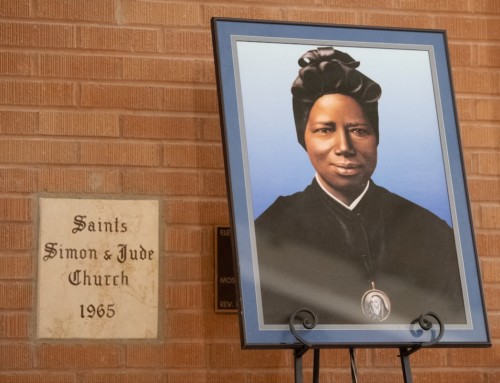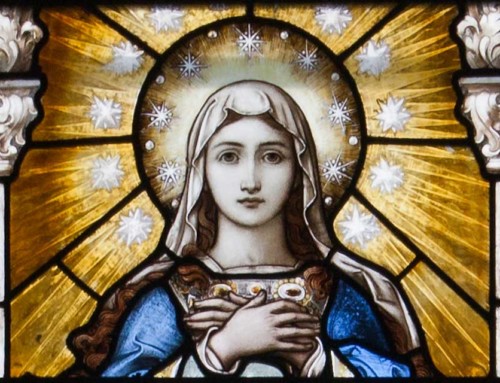Following is the prepared text from Bishop Thomas J. Olmsted’s homily for Good Friday of the Lord’s Passion.
April 19, 2019
In the Eastern European country of Lithuania, there is a place called the “Hill of Hope.” More than 50,000 crosses of all shapes and sizes occupy this site of less than an acre. Why 50,000 crosses on this small tract of land?
Several decades ago, when the Soviet Union controlled Lithuania, a 400-year-old church called St. Casimir’s, the finest Baroque-style church in Vilnius, was confiscated by the Communist regime and turned into a “Museum of Atheism.” At the same time, on the “Hill of Hope” where only a few crosses stood, a bulldozer was sent to flatten every cross, to obliterate any sign of Christianity. However, that night, faithful Christians came and erected a new cross. The next day, the Communists, finding a cross on the hill, brought in the bulldozer, and smashed it. That night, a new cross was put in its place. The next day, the cross was obliterated, and soldiers were sent to guard the barren hill. After a few weeks, the soldiers left. That night, not just one but a number of crosses were set up on the hill. The next day, the crosses were bulldozed away. So it went for many months.
A war of nerves ensued: Atheistic communist power with armed forces and destructive machines on one side; and Christians with hammers, nails, wood and fearless faith on the other. The Communist authorities eventually gave up; because as soon as their armed forces would withdraw, not just one or a few crosses would be erected, but tens and then hundreds of crosses! Before long, it grew to more than 50,000! What seemed weak in the eyes of the world proved stronger than what seemed strong.
This is the mystery that we celebrate on Good Friday. We remember how Christ loved us even unto death on the Cross. The great enemies of our soul, “the world, the flesh and the devil,” try to convince us that the Cross is a failure. But, in fact, it is the opposite. It is an instrument of love that conquered sin and death. As St. Paul writes, “O death, where is your victory? O death, where is your sting?”
As Jesus was dying on the Cross (Jn 19:34) “a soldier thrust his lance into Jesus’ side, and immediately blood and water flowed out.” Still today, the love of Christ flows from His holy Cross and brings new life to all who believe in Him.
The suffering and death of Jesus was part of God’s plan from the beginning. As St. Paul writes (1 Cor 15:3), “Christ died for our sins in accordance with the Scriptures.” Many centuries before Jesus’ death on Calvary, the Sacred Scriptures foretold it. Our First Reading today from Isaiah (52:13-53:12) sounds like an eye-witness account of Jesus’ Passion even though it was written centuries beforehand: “…it was our infirmities that He bore, our sufferings that He endured, while we thought of Him as stricken, as one smitten by God and afflicted. But He was pierced for our offenses, crushed for our sins; upon Him was the chastisement that makes us whole; by His stripes we were healed.” Jesus’ death on the Cross was not a mistake; and neither is the cross a mistake in our lives. However, we will be tempted to believe that it is, if we do not take time to pray to Christ crucified and if we are not willing to embrace the Cross in our daily lives. Jesus tells us, “Unless you take up your cross and follow me, you cannot be my disciple.”
A few years ago, I visited a wonderful man of God who was in and out of hospitals numerous times, but remarkably never allowed suffering to shake his hope. In his hospital room, he always placed a statue of St. Therese and a little crucifix with roses at Jesus’ feet. I asked him about them. He said, “Oh yes, I always bring those along.” He knew how to keep his focus on Christ Crucified.
When the Cross comes into your life, when there are setbacks or sickness, broken relationships or worries, you may be tempted to think that God has forgotten you or that you have done something wrong. While we can bring suffering upon ourselves by sin, it may come because we are doing what is right.
Whatever you endure for love of others, are these not a share in Christ’s Cross? Christ Crucified is a sign of contradiction, a sign that is misunderstood and opposed; so are all who faithfully follow Him.
The Cross of Christ brings forth a new creation in God’s grace. Just as a tree in the Garden of Eden brought death into our world when Eve took the forbidden fruit and ate it; now, a new Tree, under which the new Eve, Mary, stands, offers a fruit that brings not death but life, life for the salvation of the world. The fruit of the new Tree of Life comes to us through the Sacraments.
St. John’s account of the Gospel, draws attention to the side of Christ; it tells us that (Jn 19:34) “a soldier thrust his lance into Jesus’ side, and immediately blood and water flowed out.” Why blood and water? Because the blood and water symbolize the sacraments that give life to the Church: Baptism and the Eucharist.
In other words, the Church was born from the side of Christ as He fell asleep in death on the Cross; just as Eve was born from the side of Adam as he was sleeping in the Garden of Eden. Then, just as the sin of Adam and Eve ushered suffering and death into our world, so too the love of Christ on the Cross brought into our world a love that is stronger than death and one that is more powerful than sin.
Be not afraid, then, to embrace the cross in your life. See beyond the suffering of the moment to the victory of truth and love that Christ Crucified promises.
If any of you do not have a crucifix in your home, I urge you to get one and to put in a place of prominence. Then, when misunderstandings arise, or sickness or sorrow, or some obstacle to faithful love, or when you are tempted to think God has forgotten you, the crucifix will remind you that the Lord is near to the broken-hearted. Jesus’ love is stronger than whatever problems you face. The Cross of Christ is our great hope. It is the Tree of Life.





